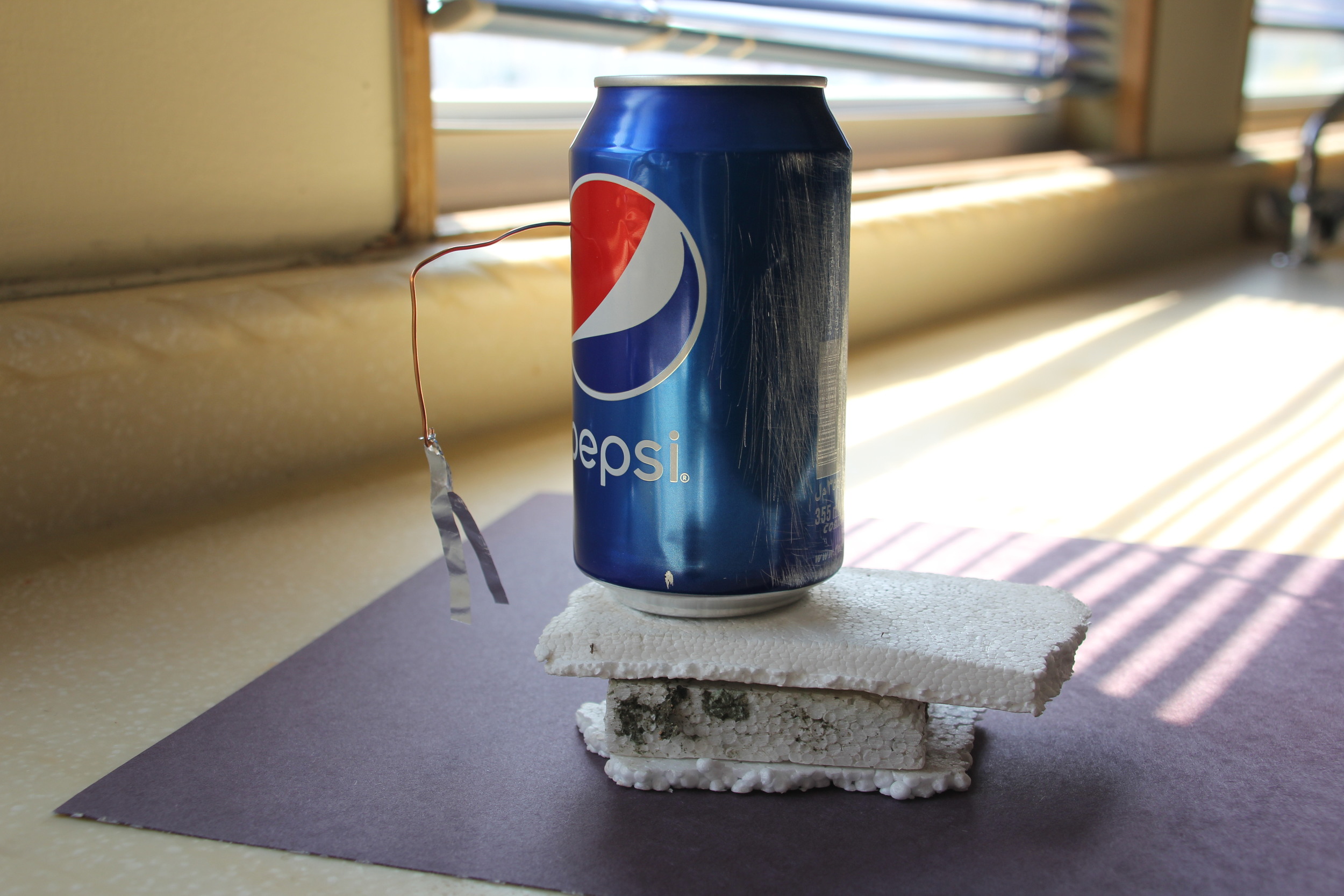A seemingly daunting task lay before me: teaching my chemistry students about the nature of light. That light behaves like a wave and is made up of particles, or photons. The textbook offers the example of the photoelectric effect as proof of the particle nature of light. Which, is cool, but not really imaginable. I wondered, “Could I make my own photoelectric cell and be able to demonstrate the effect in class?” That would make it so much more real to them. Thanks to Google, there were several examples and descriptions online as to how to make, with simple supplies, a photoelectric cell and demonstrate the photoelectric effect. It took a trip to the souks in search of a black light and several attempts of messing around with my materials before I had a functioning device. I couldn’t wait to show my students.
The class note-taking sheet was handed out and we began our series of demonstrations and discussions regarding light. The students were engaged with the slinky demonstration and discussion of the wave-like behavior of light. They were wowed by the power of the hand-held spectroscopes to distinguish different wavelengths of visible light. In fact, we lingered here a bit because they really thought this was “cool” and ended up conducting a small exploration by comparing sunlight with fluorescent light in the classroom. Then it was time to talk about photons.
My little flimsy can with aluminum strips stood on the table. Students gathered in close as they were warned they needed to be looking carefully because what they would be viewing is subtle (the movement of the small pieces of aluminum foil). After charging the pieces of aluminum foil with electrons so that they repelled each other (of course a discussion centered on that!), I held the black light to the can. The students waited skeptically with baited breath for something to happen. Then, the pieces of aluminum foil jumped around a bit and fell side-by-side, no longer repelling each other. Excited outbursts followed. “Can we see that again?” Then we talked our way through what was happening and suddenly they realized they had just seen proof regarding the particle nature of light. One girl’s exclammation, “That is actually really cool” was followed by the others nodding and emitting little sounds of agreement.
Their next task was to explain the photoelectric effect in their own words. In their class notes they found images of the very can they had viewed that day. “Is this here?” a student asks in disbelief. “Yes, I thought having the picture of what you saw would help you make the needed connections.” Several grins spread across the room and soon they are all smiling. I’ll admit, sometimes I’m still never sure if they are laughing at me or with me. I run my tongue over my teeth searching for leftover parsley pieces from lunch and probe, “What is it?”
“Nothing. It’s just that we’ve never had a teacher take pictures for us before.”
Suddenly it hits me, they are appreciative, perhaps even touched, by my effort. They immediately sit down to complete the written task. They question, they ponder, they write. Granted not every student is swept away by my demonstrations but the majority are.
A personal connection with the content has been made. The students that skeptically hung around the fringe of the group, unwilling to kneel down and see the effect never “got it.” One student actually said to the others, “There’s nothing happening. This isn’t real.” However, those who were on their knees studying the pieces of aluminum foil vehemently defended what they saw and countered the skeptic with scientific explanations. These are also the students who were able to describe the photoelectric effect and later make connections in a flame test lab, being able to discuss the role of photons in the excitation of electrons and subsequent emissions spectrums while the skeptic remained somewhat lost throughout the unit.
I advocate the effort to “make it personal.” In this case a hands-on experience was provided coupled with the personal touch of the images in the class-note taking sheet. While a small subset of students remained uninvolved despite all efforts on my part, never mastering the concepts of the unit, the rest of the class become involved at different stages. Some students were riveted by only the can, foil strips and black light. Another set was drawn in following discovery of the photographs that related to the class experience. Still another set became interested by the “witnessing” of their peers. All of these students demonstrated learning in subsequent formative and summative assessment.
If even just a handful of students respond to our efforts to “make it personal” and to “make it real”, it’s worth it. The “aha” moments in the classroom, the joy in learning, and the success in assessment are the rewards.


